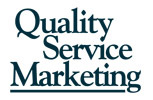
“Using emotional intelligence and showing deep human respect for employees is key. Without that, your IQ, occupational knowledge, and educational degrees mean little to employees.” Kate Nasser
As a fellow advocate for an engaging and respectful workplace, I’ve been following Kate on social media for a while. That’s why I was thrilled to read her terrific new book, Leading Morale: The People Skills to Stop Negativity & Ignite Contributions, and interview her here.
About Kate: Known as The People Skills Coach™, Kate Nasser is a thirty year workplace-tested consultant who continues to advise leaders and teams throughout the world on high morale and service for operational excellence. She is highly sought speaker because she brings morale issues to life and delivers solutions. In her first book, Leading Morale, she offers everyone the intersection of research and practical experience to lead morale instead of taking it for granted and scurrying to fix it later.
QSM: Please tell us why you wrote Leading Morale.
Kate: I wrote Leading Morale because leaders weren’t doing it. They saw morale either as something that just happens (i.e. you can’t actually lead it) or cheer leading events — brief moments of appreciation — that don’t lead, build, or sustain morale.
QSM: What do you think will surprise readers the most when they read your book? 
Kate: I believe leaders will be surprised at what morale really is and how much they are influencing it. They will read insights that will stop them in their tracks and make them question what they subconsciously do. Lastly, leaders will be happily surprised at how they can easily lead morale.
QSM: In your experience, what is the biggest challenge in building and sustaining a more empowered and engaged workplace culture?
Kate: The biggest challenge is for leaders AND managers to replace their comfort of leading/managing goals to inspiring people to lead and manage their efforts to reach the goals.
QSM: I dream of an ideal world where people treat each another with genuine respect and dignity — a world where we wouldn’t need your book (no offense!). Accepting reality, however, what do you think is needed to get us closer to this ideal (beyond making your book required reading in all schools)?
Kate: I love this question, Sybil, and I am not offended. To have a world where people treat each other with genuine respect and dignity we must:
a) Think of it as very reachable not as an ideal. As soon as we see something as an ideal, our brains tell us that we won’t get there. Some people then check out and think, well then … forget it.
b) Do it, show it, and discuss its importance daily. This is how you create a culture..
c) Politely demand it. When someone treats you disrespectfully, don’t tolerate it. Speak up civilly and say, “I treat you with simple respect and I expect the same in return. Nothing more, nothing less.” As Eleanor Roosevelt said, “No one can make you feel inferior without your consent.” So don’t consent to disrespect and indignity.
QSM: Thank you, Kate!
You can see her in action in video footage at KateNasser.com. She welcomes your questions and challenges.










